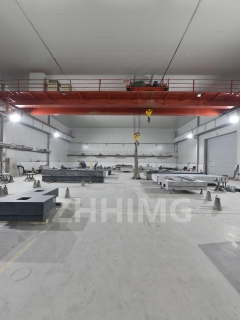Granite is a popular choice in many industries for its durability, strength, and resistance to wear and tear. When it comes to industrial computed tomography products, granite components provide the necessary stability and precision required for accurate imaging. However, like any material, granite is not without its flaws and limitations. In this article, we will explore the defects of granite components for industrial computed tomography (CT) products.
1. Porosity: Granite is a naturally porous material, which means it can contain microscopic voids or pores in its structure. These pores can affect the integrity of the granite, making it susceptible to cracking and chipping. In industrial CT products, porosity can also lead to inaccuracies in imaging results if the pores interfere with the X-ray or CT scan.
2. Natural Variations: While granite’s natural variations are often appreciated for their aesthetic appeal, they can present a challenge in industrial CT products. Variation in granite can cause differences in density and inconsistency in scanning results. This can lead to imaging artifacts, distortion, or misinterpretation of results.
3. Limitations of Size and Shape: Granite is a rigid, inflexible material, which means there are limitations when it comes to the size and shape of components that can be made from it. This can be problematic when designing complex industrial CT products that require intricate configurations or require components of specific dimensions.
4. Difficulty of Machining: Although granite is a hard material, it is also brittle, which can make it difficult to machine precisely. Specialized machining tools and techniques are required to create granite components for industrial CT products. Moreover, any defects or irregularities in the machining process can lead to inaccuracies in scanning results.
Despite these limitations, granite remains a popular choice for industrial CT products. To mitigate the effects of these defects, manufacturers have developed new technologies and machining techniques to ensure the precision and accuracy of granite components. For example, some manufacturers will use computer-aided design (CAD) programs to design the component and identify possible defects. Additionally, advanced machining technology allows for precise, computer-controlled cutting and shaping of granite to ensure that each component meets the necessary specifications.
In conclusion, while granite is a popular choice for industrial CT products, it is not without its defects and limitations. However, with advances in technology and specialized machining techniques, these defects can be mitigated, and granite components can continue to provide the durability and precision required for industrial CT imaging.
Post time: Dec-07-2023

